24 Different Types of Bracelets: Your Ultimate Guide to Bracelet Designs


Bracelets have been around forever, with many types of bracelets being unearthed from civilizations past. In fact, a bracelet made out of green stone discovered in a Siberian cave dates back no less than 40,000 years, according to experts. They’ve been worn as accessories around the wrist, they’ve been worn as status symbols, and they’ve even been worn as protective arm guards.
There is a huge range of types of bracelets out there. From sleek minimalist bangles to statement cuffs, or intricate pieces adorned with charms, pearls, gemstones, or amulets, each bracelet makes a statement in its own way. And with so many styles, bracelets have the power to evoke a certain aesthetic, symbolize a certain style, represent a subculture, or celebrate tradition.
Read on to take a look at the many types of bracelets available today. We’ll look at their characteristics, materials, design, and appeal, an explore their history and fun facts. Read on for the ultimate, most comprehensive guide on bracelet types.
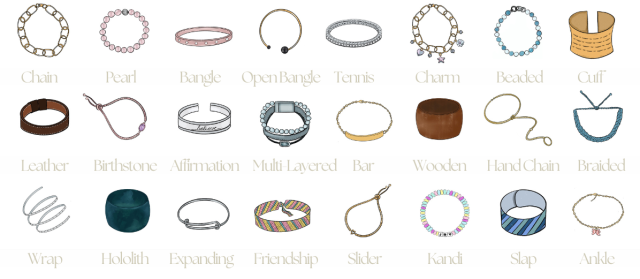
With so many different shapes and bracelet styles to choose from, we’re here to help you find your new favorite. Here are some popular types of bracelets to inspire your style!
Chain bracelets are popular pieces of jewelry, predominantly made of metallic links. The types of chains can vary, with the most popular being classic cable chains featuring interlocked oval links, box chains, Byzantine chains, curb chains, wheat chains, and rope chains.
Most chain bracelets are made of metals, such as gold, silver, or stainless steel, and sometimes plastic (resin, acrylic) or occasionally wood. All chain bracelets feature closures, as they are not expandable or stretchy. The most popular chain bracelet closure type is the lobster claw.
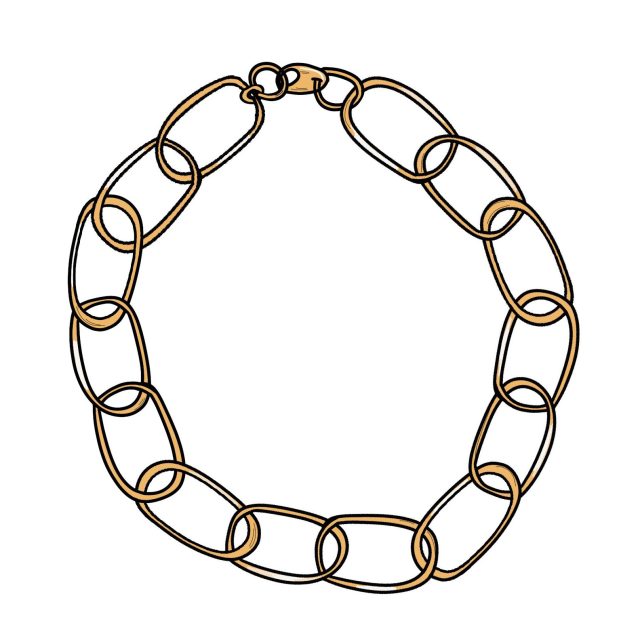
FUN FACT: During Victorian times, the husband-to-be gifted two bracelets to the future bride, who wore one piece while engaged and the other on their wedding day!
Classic pearl bracelets feature a string of real pearls, and each of these precious gems is individually knotted for extra safety. Other popular designs include multi-layered pearl bracelets, as well as tin cup pearl bracelets that feature alternating chain and pearls.
The vast majority of pearl bracelets on the market are made with cultured pearls, including freshwater and saltwater types (Akoya, South Sea, and Tahitian) in a wide variety of colors (both natural and dyed). The most popular pearl colors are classic white, ivory, champagne, pink, peach, golden, and darker Tahitian pearls shades, including peacock, almost-black, silver, and copper.
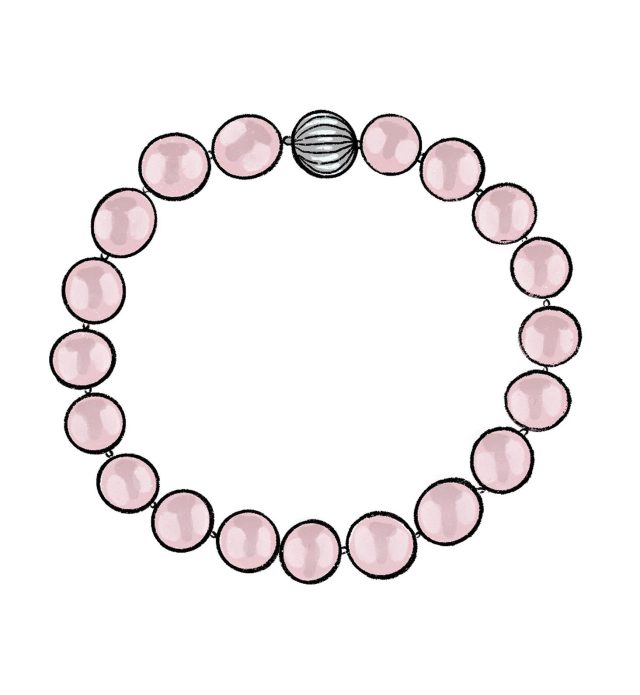
FACT: In ancient Rome, pearl jewelry was regarded as the ultimate status symbol. So much so that during the 1st century BC, Julius Caesar passed a law that prohibited the wearing of pearls by anyone who was not part of the ruling classes.
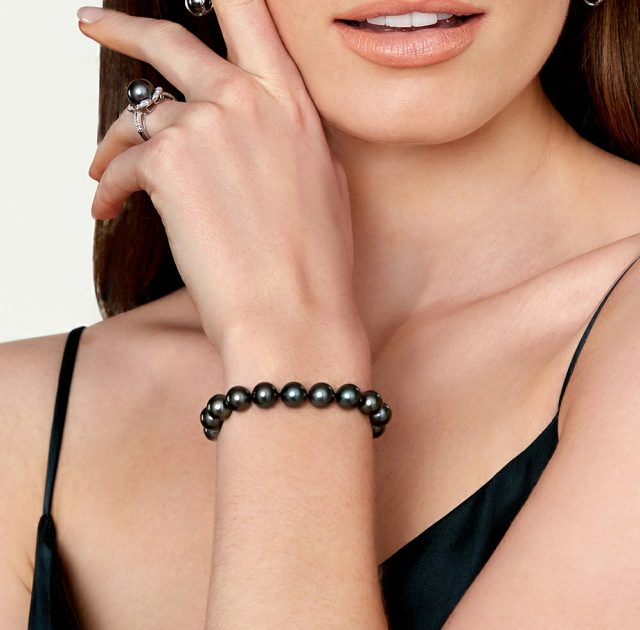
If you’re searching for a sophisticated, chic piece of jewelry, our Pearl Bracelets are a classic choice! These stylish bracelets pair with many types of rings, plus they are so verstaile to style.
Wear a pearl bracelet with office outfits, casual denim, your festive Christmas outfits, or elegant Valentine’s Day outfits. Plus, wear yours with other pearl jewelry, like classic studs, single pearl necklaces, or drop earrings. Explore our full collection for yourself!
Bangles are types of bracelets that are rigid, non-flexible, and typically in a circular design. Unlike most bracelets, bangles do not have closures. Two types exist: classic bangles (closed) and open bangles, which are easier to fit in a wide range of sizes.
Bangle bracelets are worn in different ways: as a single statement piece or layered, loose on the wrist, or higher up on the arm, depending on the preferred style. Bangles are typically made of metals and occasionally made of plastic materials, glass, stone, or wood.
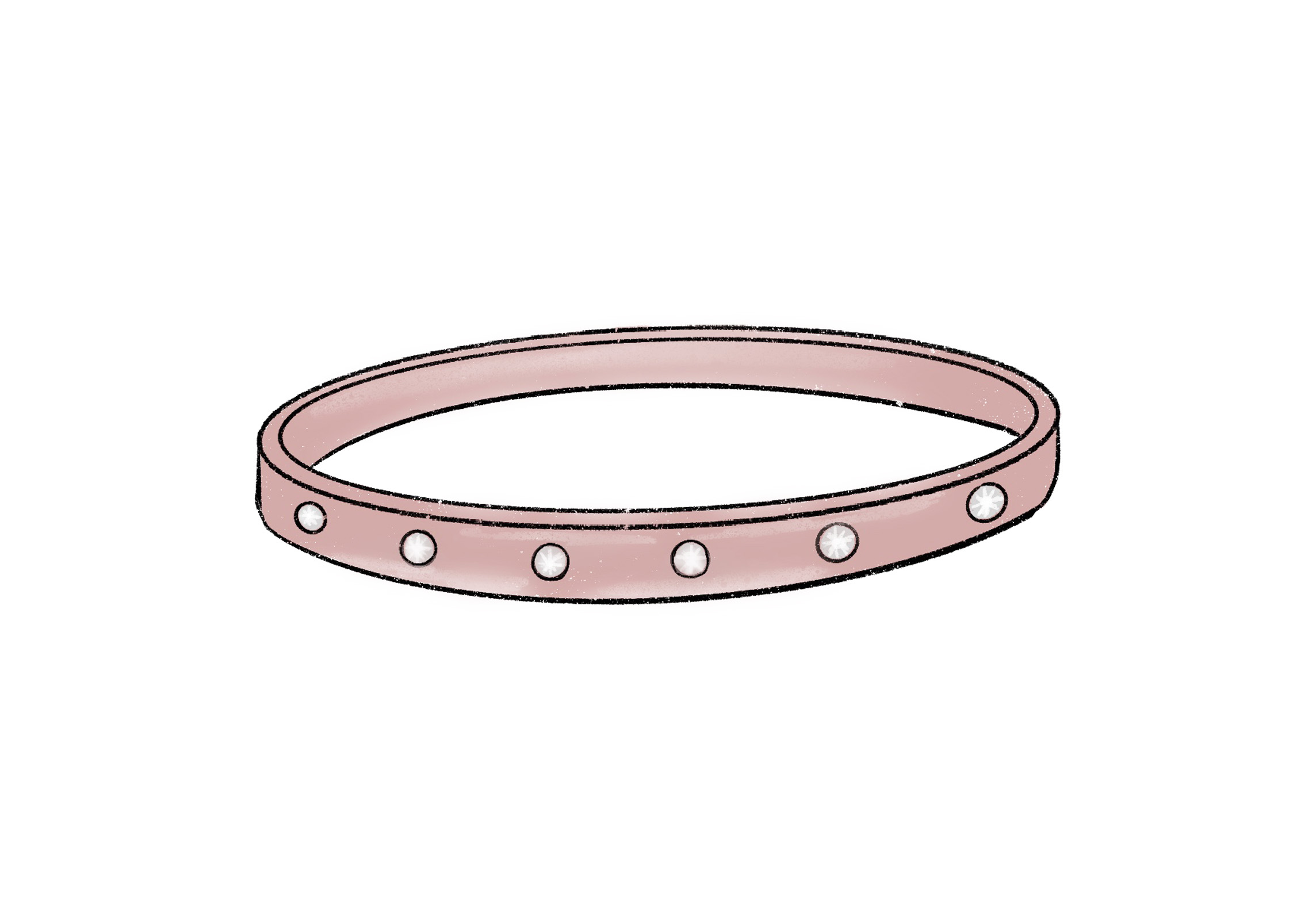
FACT: Bangle bracelets have been found in ancient Mayan, Mauryan, Roman and Indian ruins, usually made of made of terracotta and stone.
Open bangle bracelets are typically circular in shape, with a small opening (or an overlayed opening). They are either sturdy and rigid, made of one metallic piece, or slightly flexible (pictured below), like beaded bracelets or designs in sleek metals.
Open bangles often feature decorative elements. These include gems at each end, bar elements (suitable for engraving), or interlocked designs.
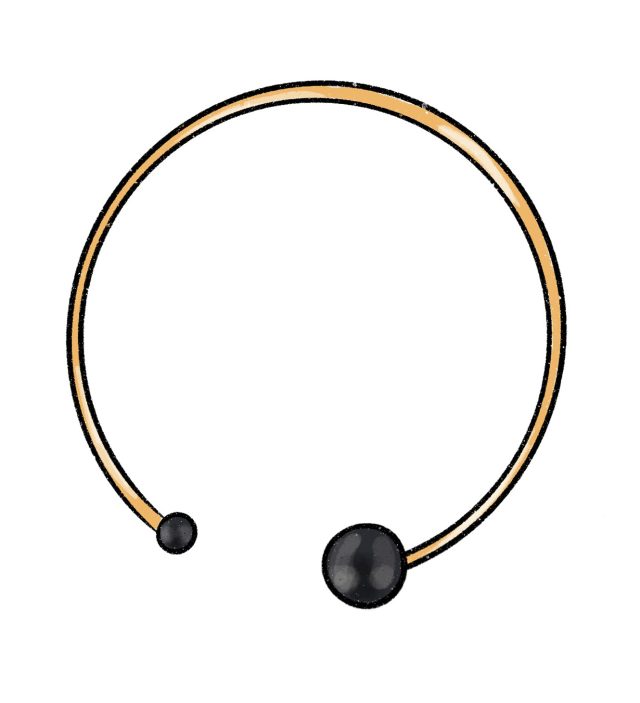
FUN FACT: The word ‘bangle’ comes from the Hindi word ‘Bangari’, which means glass. Glass bangles were made since 1500 B.C., long after the first bangles, which were actually made of clay.
Tennis bracelets are eternity strands, typically featuring diamonds. Alternatively, they also come adorned with more affordable gems, such as Cubic Zirconia. These bracelet designs are symmetrical, featuring connected gemstones on a metal fixture or chain, that can be rigid or elasticated.
The stones featured in tennis bracelets are usually the same size and color. Similar to pearl bracelets, classic bangles, and chain bracelets, tennis bracelets are considered a timeless piece of jewelry that ranks high in versatility and universal appeal.
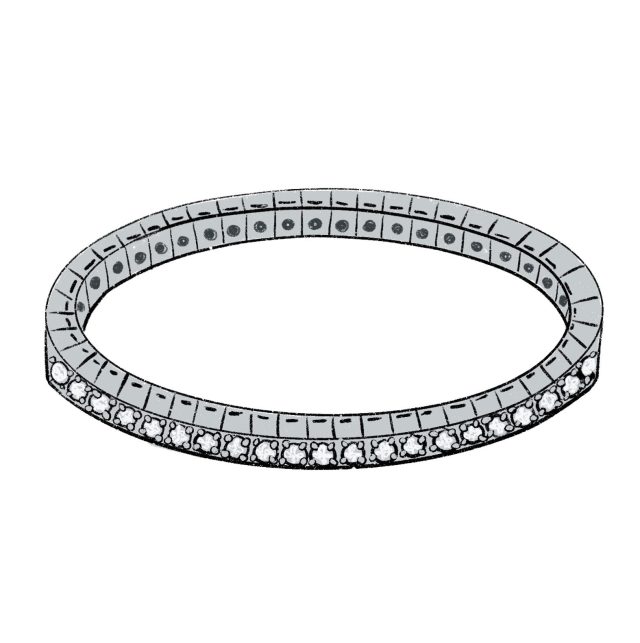
FUN FACT: The name “tennis bracelet” comes from professional tennis player Chris Evert, who, during the 1987’s U.S. Open, requested a pause in the game in order to look for her diamond bracelet that had fallen off her wrist!
Charm bracelets are typically chain bracelets that have been adorned with charms, including pendants and trinkets, all with a decorative and/or symbolic purpose.
Popular charm options include hearts, flowers, locks, letters, astrological signs, and astronomical bodies. Similar to chain bracelets, charm bracelets feature sturdy closures, including lobster lock, spring rings, toggles, and various types of hook closures.
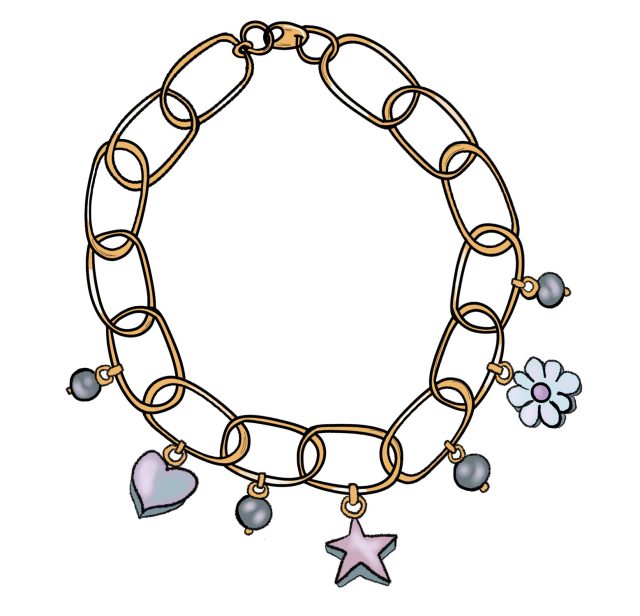
FUN FACT: Jewelry charms go back a long time. In prehistoric times, jewelry trinkets were crafted from shells, bones and natural clay. Later on, gems, rocks and wood were also introduced in bracelet making.
Beaded bracelets feature a string (or multiple strings) of beads, often made from plastic, glass, wood, or gem beads of different shapes, sizes, and colors. A beaded gemstone bracelet can be elasticated, adjustable, featuring closures, wrap-style, and many more.
Typically, the beads are placed on the string, wire, or elastic. There is a wide range of beaded bracelets available, including uniform designs (featuring beads of the same size), mixed or crescent beading designs.
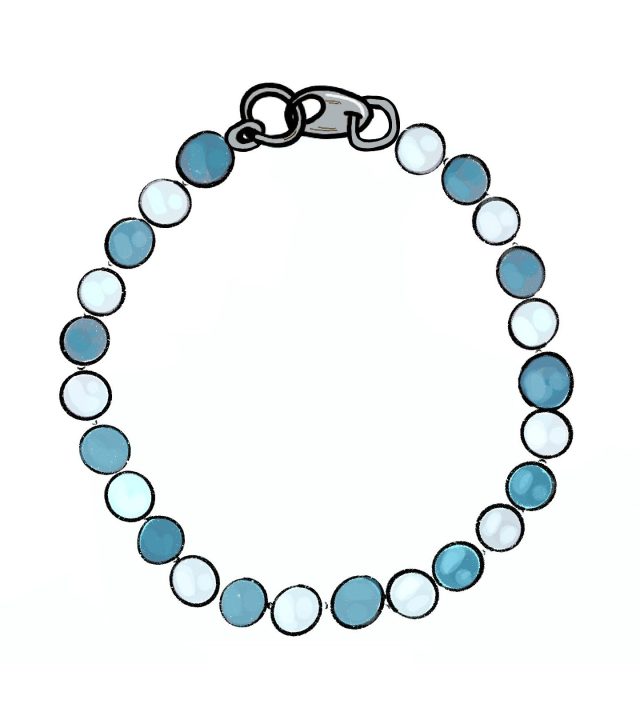
FUN FACT: The ancient Egyptians wore beaded bracelets crafted from bones, stones and wood for religious and spiritual reasons.
A cuff bracelet is an open type of bracelet which is wider, as well as rigid. Usually crafted from solid metals, cuffs can also be made of sturdy plastic materials, stone, and wood.
They hug the wrist or the arm slightly, with an opening that can be fully rigid or slightly flexible for adjustments. They are generally considered statement jewelry pieces, due to their larger construction.
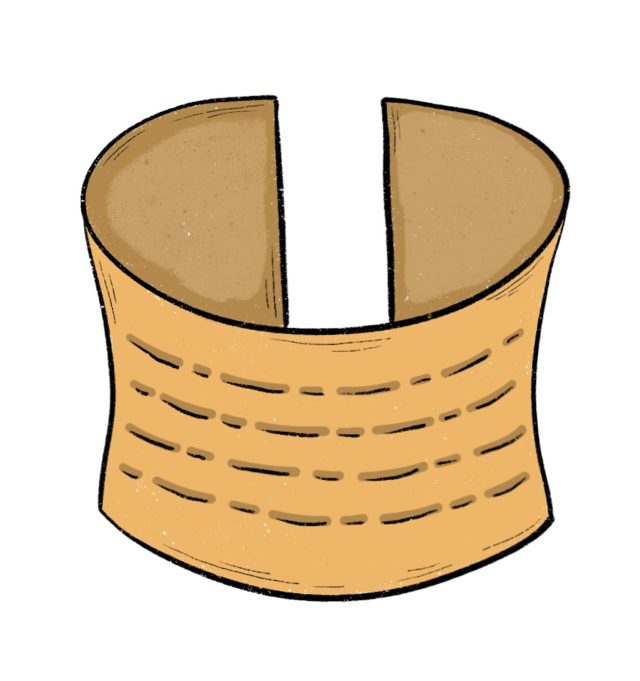
FUN FACT: Cuff bracelets go back 7,000 years. Ancient civilizations like the Egyptians, Greeks and Romans wore cuffs as status markers, as well as tokens of protection.
There are many types of leather bracelets out there, with the most popular types being braided wristlets and leather cuffs. Some designs feature just leather, while others feature decorative elements, ranging from plaques/tags, gemstones (like pearls), baubles, and charms.
They are a highly versatile bracelet type, worn by all genders and loved in many cultures and subcultures. Surfer style leather bracelets with pearls are a popular unisex and mens pearl bracelet type.
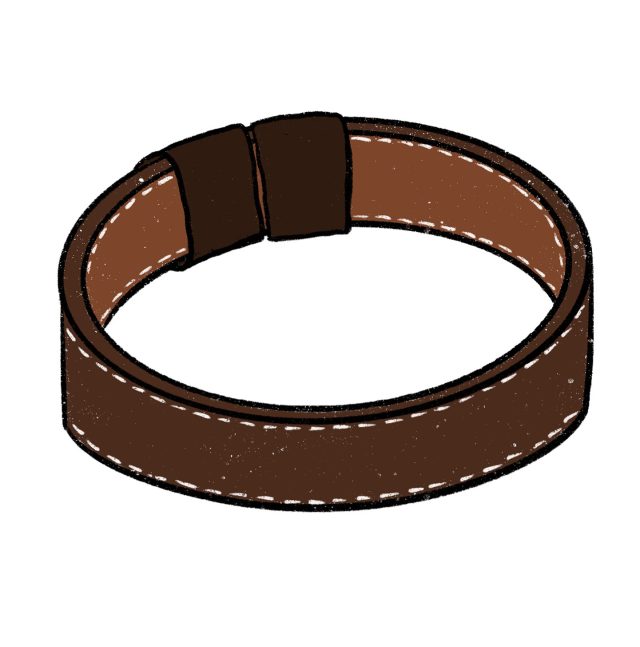
FUN FACT: Leather is a very durable material. Top-quality leather accessories (as well as clothing) can last up to 30 years, if properly cared for.
Birthstone bracelets are a highly personal type of bracelet that feature one of the monthly birthstones. Each month comes with one, two, or even three birthstones (such as Pearls, Alexandrite, and Moonstone for June).
Each birthstone is believed to bring certain benefits to the wearer, including boosting physical or mental health, improved focus, and exuding stress-relief or relaxation properties. Birthstone earrings abd pendants are also popular types of birthstone jewelry.
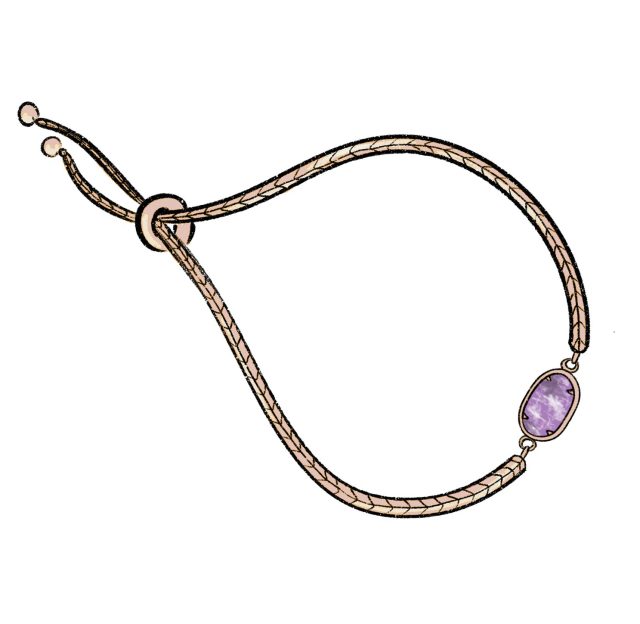
FUN FACT: Out of all the birthstones, Alexandrite and Black Opal are the most rare.
Affirmation wristbands are bracelets with heartfelt meanings that include motivational words or phrases. Many bracelet styles can be affirmation bracelets, including bangles and open bangles, bar bracelets, Kandi bracelets, slider bracelets, or multi-layered designs.
Affirmation bracelets can be custom-made for gifts and special occasions, such as bridesmaid proposals, anniversaries, milestones, or birthdays.
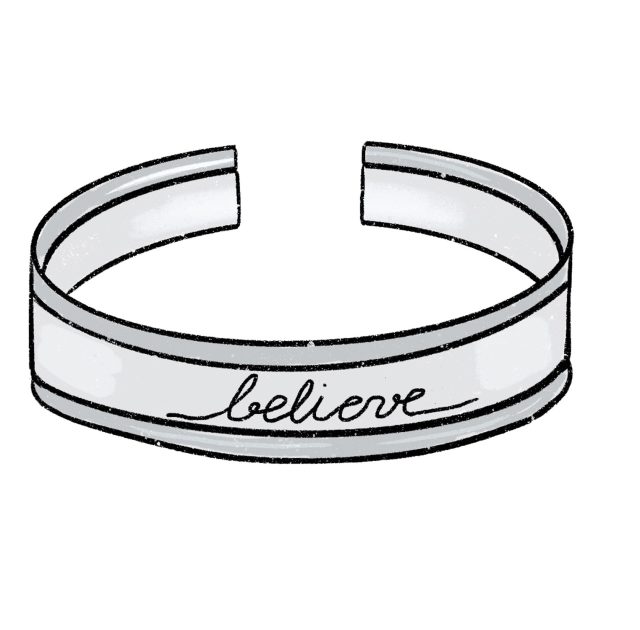
FACT: An affirmation is either a sentence, a phrase or a word that is aimed to boost positive thinking and self-empowerment, both at a conscious and unconscious level.
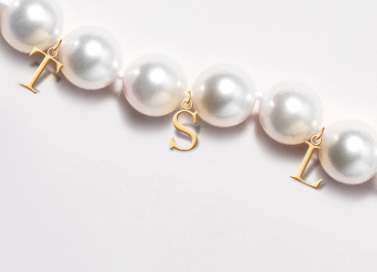
Tell your unique story with the beauty of pearls. Add an engraving of your loved ones’ initials to a pearl bacelet or necklace from The Pearl Source as a daily reminder of your love. Or, create your very own custom jewelry piece with dainty letter charms — perfect as bridesmaid jewelry!
A sentimental token created by you, and custom-made by us. Special. Unique. Truly yours.
Multi-layered bracelets are, just as the name suggests, bracelets that feature two or more layers. These can include strings of pearls or beads, leather bands, chains or other metallic elements. Some multi-layered bracelets are uniform, meaning each layer is identical to the next (like the pearl bracelet seen below, traditionally worn as wedding jewelry).
Alternatively, some multi-layered bracelers are mixed, where each layer features a different design or material.
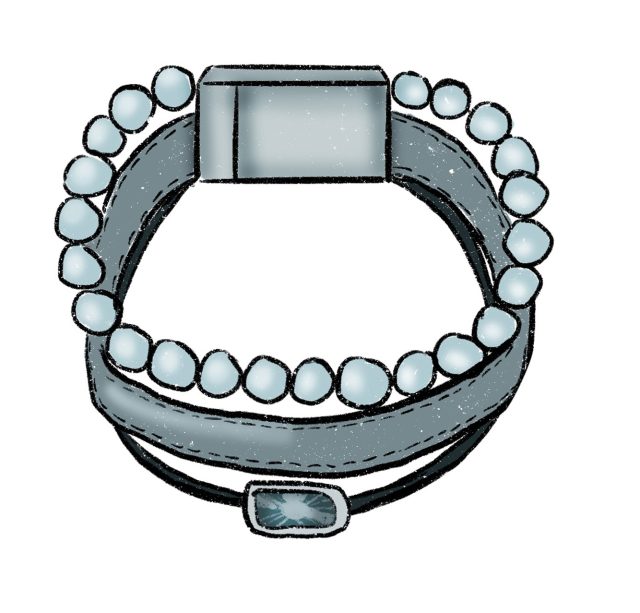
Shop Double Pearl Necklaces and Bracelets & Triple Pearl Necklaces and Bracelets!
Bar bracelets types of bracelets that feature a metallic bar as part of their design. This bar can be attached to a flexible chain, or it can be placed on a rigid open or closed bangle. The bar element has a decorative purpose and is a part of the minimalistic jewelry trend.
Oftentimes, the bar is used for engraving initials or affirmations, making these bracelets popular choices for customized gifts.
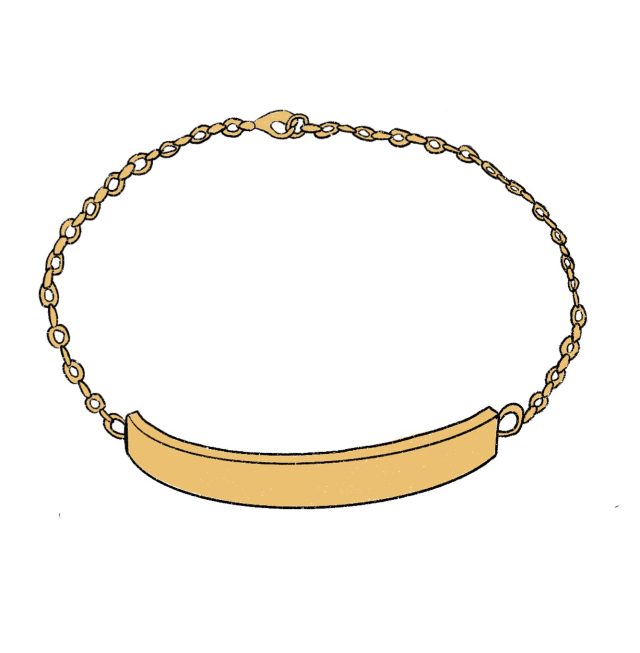
FUN FACT: The first engraving originates in Indonesia and was carved into a shell, dating between 540,000 to 430,000 years ago. Bone and ivory engraving became popular during the European Stone Age.
Wooden bracelets are made from natural wood – either wooden beads or solid pieces forming bangles and cuffs. Most wooden bracelets do not have closures, as they are either rigid bangles or elasticated beaded designs. Wood bracelets have a boho style appeal and are often layered with other pieces made of natural materials.
Wood is one of the oldest materials used in the crafting of bracelets, together with stone and bones. These days, many wooden bracelets are used as essential oil diffusers. The natural material absorbs and holds the scents for days.
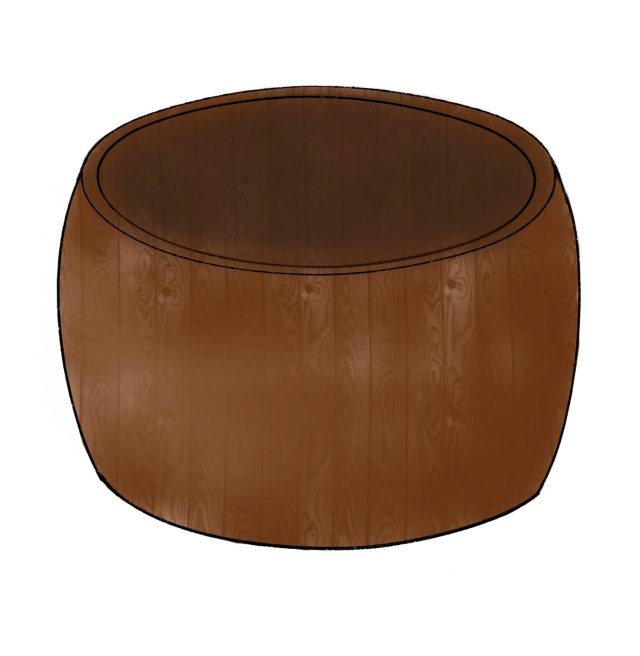
FACT: Wood jewelry is hypoallergenic, antibacterial and antimicrobial, which makes it an ideal choice for people with sensitive skin.
A hand chain bracelet is a type of jewelry that is both a bracelet and a ring at the same time. Usually crafted from metallic chains — as the name suggests — these types of bracelets attach the part that sits on the wrist to the ring part with a chain (or chains) that matches the design. They are a favorite among bohemian-style aficionados, as well as a popular statement jewelry choice.
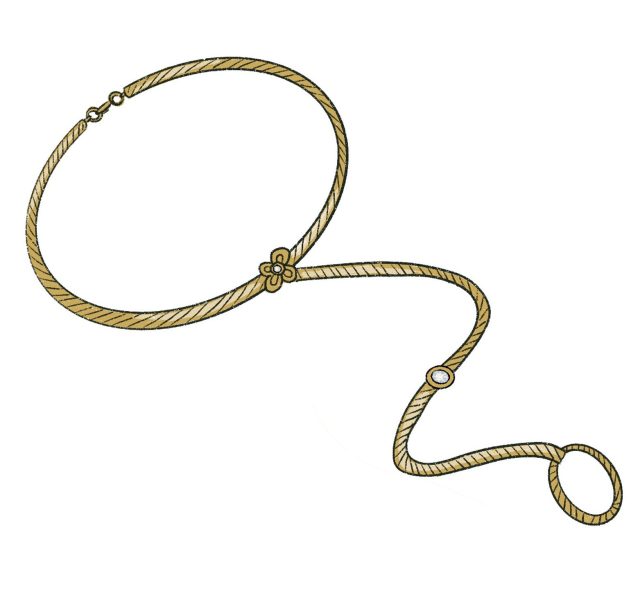
FACT: In India, hand-chains are worn by brides as part of their wedding day jewelry. Traditionally the bride wears 21 bangles, although many modern brides choose to wear 7, 9 or 11 bangles.
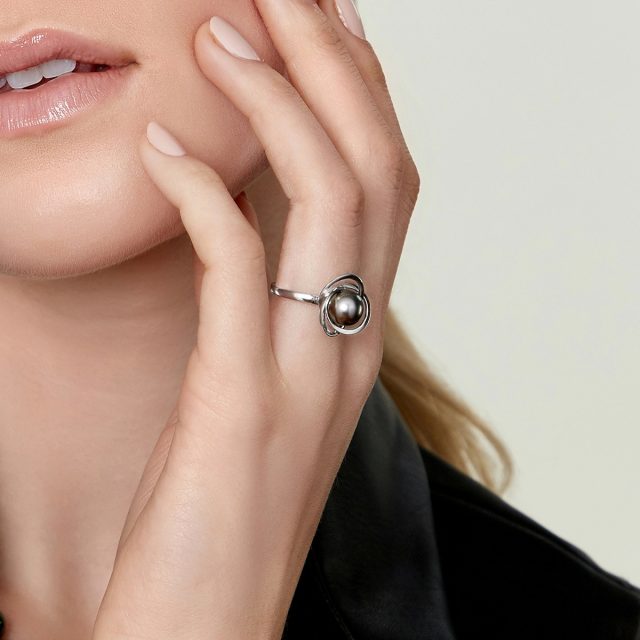
The luster of a pearl ring is the perfect match to your chic pearl bracelet. Elegant and timeless, it’s a statment of modern refinement.
A pearl ring is also the perfect anniversary jewelry gift. Discover our collection of mother of pearl, Freshwater, Akoya, Tahitian, and South Sea Pearl Rings — starting from just $99!
Braided bracelets come in various materials, from yarn to rope, leather, ribbon, and rubber. Usually unisex, braided bracelets come in a wide range of designs.
The most popular styles include versatile smart-casual pieces, colorful friendship bracelets, simple and discreet braids, or bold styles adorned with gems and charms.
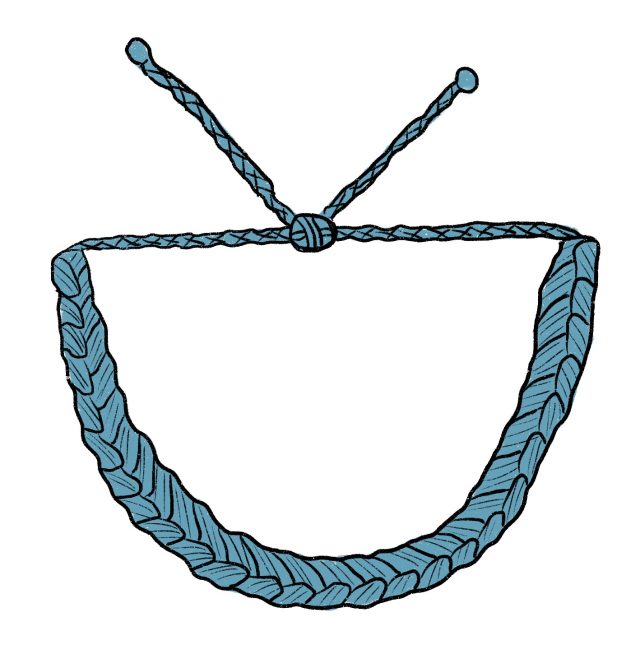
FUN FACT: Records show that woven friendship bracelets were crafted over 200 years B.C. in China.
A metallic wrap bracelet is a type of jewelry that is usually worn on the forearm — or even the upper arm — rather than the wrist. This type of bracelet can be worn on an arm of any size, and may feature two or more layers that go round and round in a concentric design.
Another type of wrap bracelets features beads. These are strung on leather cords, wrapping around the wrist twice or more.
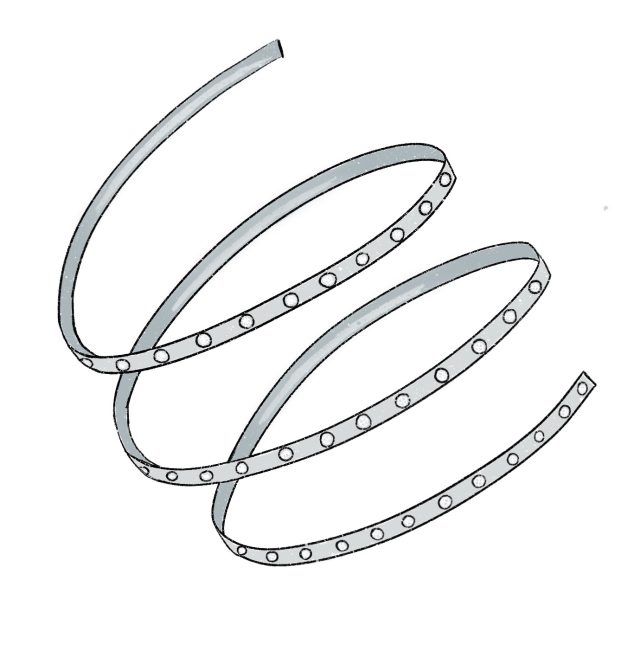
FUN FACT: Affluent men wore intricate, bold bracelets during the Middle Ages in Europe in order to flaunt their social status.
A hololith bracelet refers to the type of jewelry that is made from a single piece of stone. The most common stone used for these bracelets designs is jade.
Making hololith bracelets involves the process of crystal carving. Due to their sturdy, compact structure, these bracelets do not feature closures, and they are technically a type of bangle bracelet.
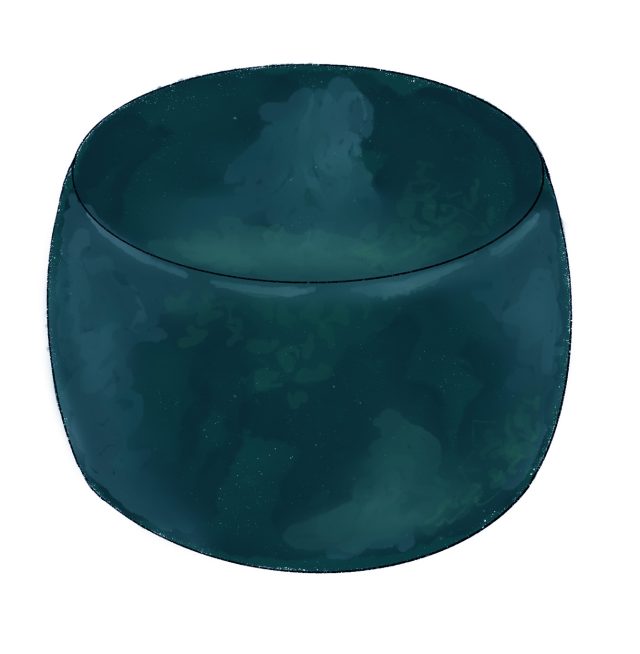
FUN FACT: Stone bracelets are considered ‘healing bracelets’. Jade promotes well-being and success, Jasper symbolizes inner strength and Amethyst boosts clarity and inspiration.
Expanding bracelets or expanding bangles refer to a type of bracelet that doesn’t feature a rigid closure, and is easily adjustable. The most popular type features an overlap of metal that allows for desired flexibility.
The overlapping section of an expanding bangle has so-called built-in ‘guide bars’. These bars allow the bangle to slide in and out with ease.
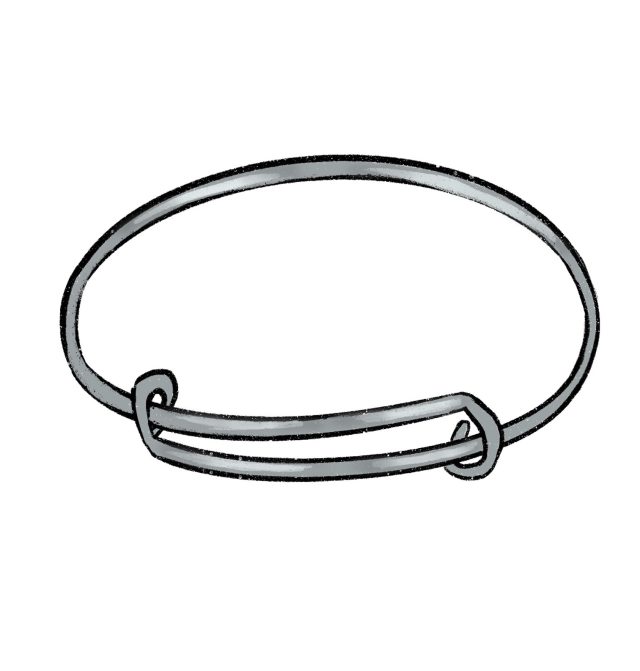
Friendship bracelets are types of bracelets with meaning. They are woven or knot-tied from embroidery floss, usually in bold and vibrant colors and playful geometric patterns. Friendship bracelets are exchnaged as a sentima as a gift between friends (often exchanged).
They originate from Native American culture, which is evident in many of the popular motifs and patterns. Friendship bracelets are highly popular with children, teens, and young adults.
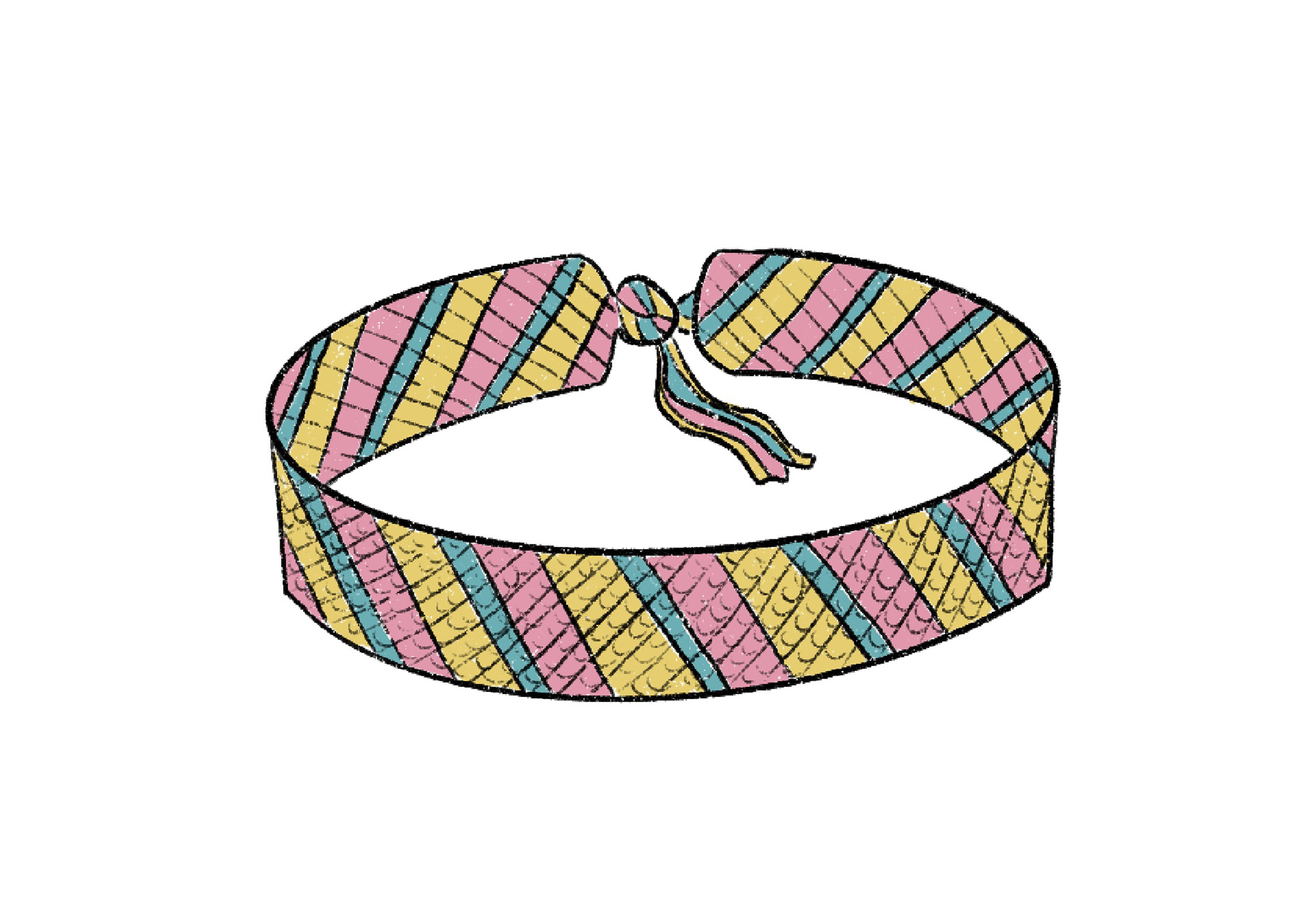
FUN FACT: In Native American culture, the creator of the friendship bracelet usually chooses the color palette to represent the qualities of their friend. Blue depicts loyalty, while red stands for honesty.
A slider bracelet features a fastener that resembles a buckle. A chain or a textile passes through this buckle in order to secure the bracelet in place. Slider clasps are relatively new inventions in the jewelry industry and they present a silicone insert that will grip the inserted string of chain. They are easily adjustable and fit a wide variety of sizes due to their easy-to-use mechanism.
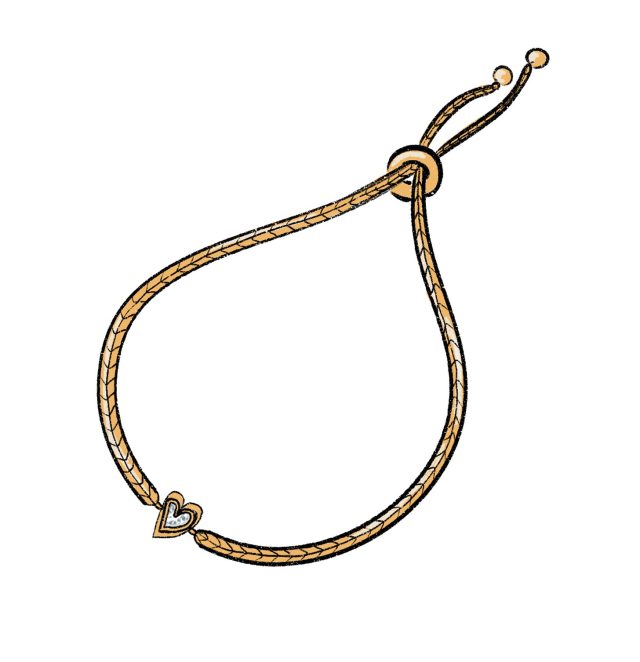
FACT: Slider bracelets are often called bolo bracelets, flexible bracelets or size-free bracelets, since they can easily adjust according to the wrist size.
Kandi bracelets are colorful bracelets that are popular in the rave music scene. They feature bright plastic beads that often spell an affirmation word or phrase, on a simple elastic band without a clasp.
They are worn stacked with other Kandi bracelets and often exchanged at parties, sometimes with a specific handshake. The Kandi craze also includes cuffs, headbands, as well as belts and headbands, all featuring the trademark colorful beads.
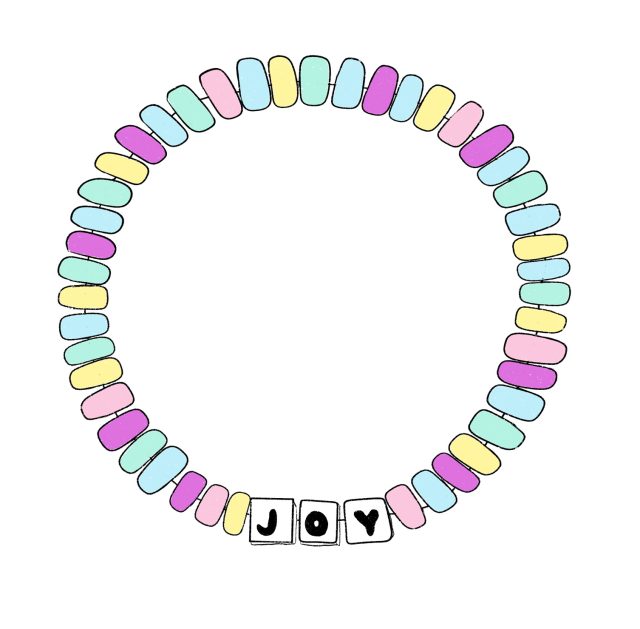
FUN FACT: Kandi bracelets represent PLUR culture, which stands for ‘peace, love, unity and respect’ in the Electronic Dance Music community.
Slap bracelets were originally called ‘slap wraps’ in 1980s fashion. They consist of a piece of steel that resembles a tape measure, covered in fabric or plastic (usually in a bright and colorful design).
Highly popular among teens, pre-teens, and children, slap bracelets snap around the wrist when slapped on with a certain amount of force.
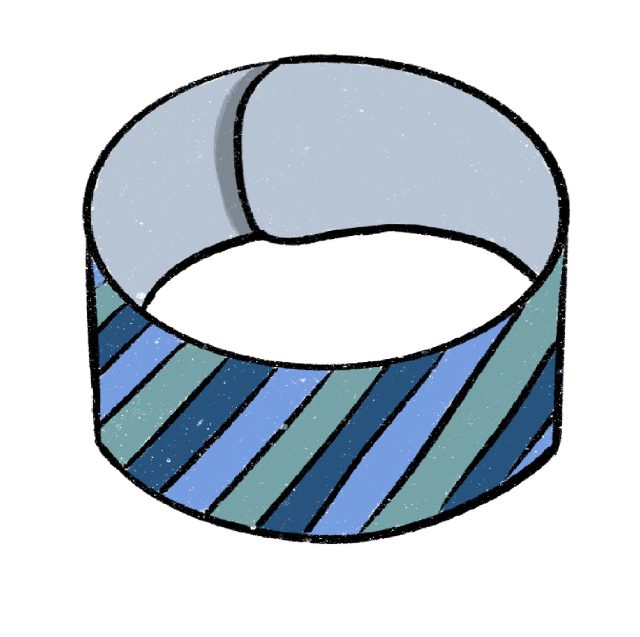
FUN FACT: Created by Stuart Anders, a teacher from Wisconsin, slap bracelets were a huge hit during the 1980s and 90s, both as a fidget toy craze and as an accessory.
Ankle bracelets — commonly known as “anklets” — are jewelry pieces worn on the ankle rather than the wrist or arm. They are usually made of chain or thread, and feature charms, beads, pearls, and other decorative elements (either fixed or dangling).
They are dainty, and usually feature standard closures like lobster clasps. Similar to a hand chain, a ‘pattilu’ is a type of anklet that features a toe ring connected by a thin chain to an ankle bracelet.
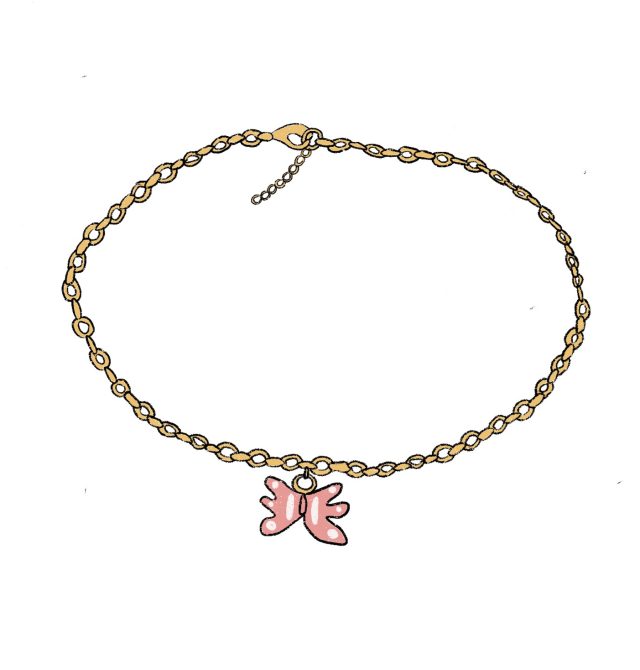
FUN FACT: Anklets go back no less than 8,000 years. Artifacts from the Babylonian period show that ancient Mesopotamian women used to wear ankle bracelets.

Bracelets come with different types of closures, however it’s worth noting that not all bracelet types need a closure. Designs like bangles, open bangles, cuffs, elasticated and wrap bracelets fit a wide variety of sizes and do not feature any closure mechanisms.
For the types of bracelets that require them, here are the most popular types of bracelet closures and clasps:
The most popular bracelet types are: tennis bracelets, pearl bracelets, charm bracelets, and bangle bracelets. These styles have universal appeal and versatility. For this reason, they are an effortless addition to any type of outfit, be it casual, business, or evening attire.
There are three different types of bangle designs: solid cylinder bangles, open bangles, and cuff bangles. Solid bangles present no opening and the bangle is shaped like a full cylinder. Cuff bangles are thick, sturdy bangles. They feature an opening that allows for easy wear and removal. The term ‘open bangles’ refers to thinner bangle types. These aren’t as thick as cuffs but also present an opening.
A bangle is a bracelet type that is rigid and solid, usually made of metal or other sturdy materials (plastic, wood, stone). The main characteristic of a bangle is the fact that unlike most types of bracelets, it does not feature a clasp closure. In general, the term ‘bracelet’ refers to more flexible jewelry pieces and ‘bangles’ refers to rigid, no clasp, cylinder-shaped wrist or arm jewelry.
The most popular materials used in the manufacture of bracelets and bangles are: metal, natural and faux gemstones and beads, leather, textile materials, plastic, stone, wood, and shells. In addition, crafting a flexible bracelet requires beading wire or string (rigid or elastic) and clasp closure, usually made out of metal.
From dangly charm bracelets to nostalgic slap bracelets, and from sophisticated pearl bracelets to edgy cuff bracelets, arm and wrist jewelry comes in many different styles. And the fact is, like all types of jewelry, every bracelet has its own unique charm.
Which one is your favorite bracelet type? Perhaps an effortlessly chic slider bracelet, or a dangly chain bracelet with cute charms? Or, maybe you prefer a versatile beaded bracelet around your wrist? Whichever your top type of bracelet is, make sure to make it truly yours – by engraving it, adding affirmations, layering it and styling it in your own unique way. Let us know your favorite types of bracelets in the comment section below!
For similar content, make sure to check our comprehensive guides on Types of Necklaces, Types of Rings and Types of Earrings!
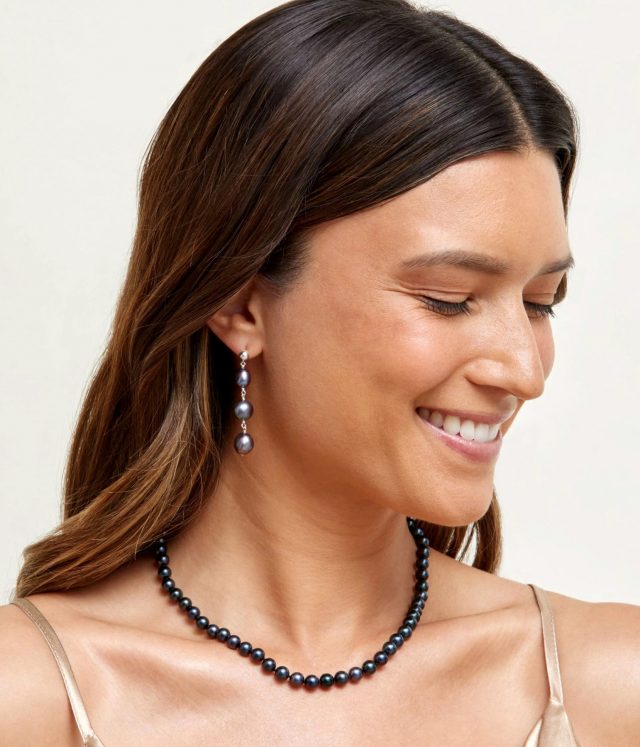
Disover dangle pearl earrings, single pearl necklaces, baroque pearls, bridesmaid earrings and more – all from just $119!
Take advantage of our latest sales and grab your very own premium pearls at 70% off retail prices!
Signup now and receive an email once I publish new content.